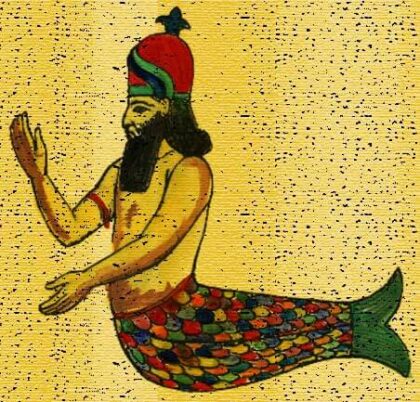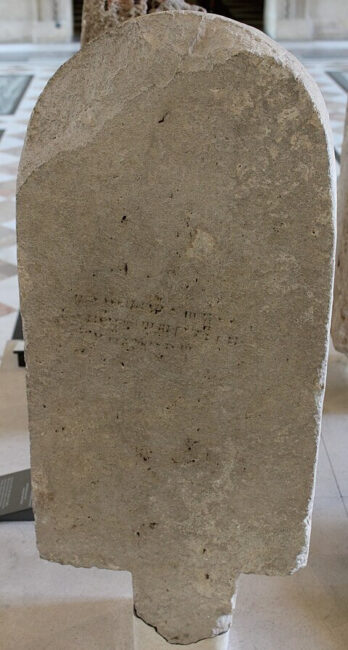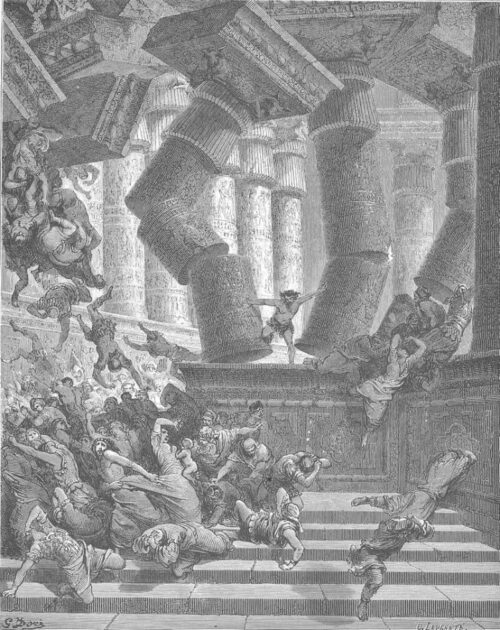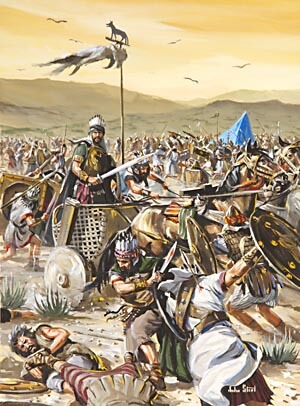Dagon is a pagan deity source Phoenicia, worshiped by different Canaanite and Mesopotamian peoples. in the Old Testament of Bible, this was the main deity worshiped by the Philistines.
Often portrayed as a deity with a human body and fish syrup, similar to mermaids. He was associated with agriculture and fishing, the main source of wealth for the Canaanite and Mesopotamian peoples, being considered the god of prosperity by the peoples who worshiped him.
Phoenician mythology and the emergence of Dagon
The Phoenician religion is marked by polytheism. Despite their gods being widespread between the Mesopotamians and Canaanites, each Phoenician city had its own deities and forms of worship.
The Phoenician deities also suffered many adaptations, depending on the region and historical period of each people. Dagon, for example, was considered the “Father of the Gods” by the hurritas, having family with wife and children[1].
Other peoples, such as the Philistines, worshiped him alone, without associating him with a family. The most worshiped Phoenician deities were Baal and Astaroth.

Genealogy
The genealogy of Dagon has divergences between the old texts and inscriptions. In some versions he placed as the son of El, the main Phoenician god and father of all others, and brother of Baal. In other versions he has two brothers, Baal and Mot.
Some peoples, like the Hurrites, described this god as having a wife and children. His wife would be Shalash and his children Hadad and Hebat[1].
Worship and Worship
Being an agricultural deity, Dagon was associated with fertility and abundant harvest. The Phoenicians believed that he had the power to grant prosperity, abundance of food and success in harvesting.
Because it possesses fish characteristics, this god was also associated with the seas. being considered the “god” of the seas and fish and revered by the fishermen/navigators.
The rituals of worship involved sacrifices in the temples, offerings and ceremonies of thanksgiving.
Temples of worship were built in several Phoenician and Mesopotamian cities, even though they were a deity less worshiped than Baal and Astaroth, for example. The Bible tells us that a great for worshiping Dagon existed in the city of Philistine asdod.

Biblical Reports on Dagon
the biblical accounts of Dagon, are associated with worship carried out by him by the Philistine people in their cities.
Samson and Dagon
The first mention of Dagon in the Bible occurs in chapter 16 of the book of judges. In which Samson, then Israeli judge, was captured by the Philistines and taken to the temple of worship to god in Gaza City.
Samson was humiliated, had his eyes pierced and was chained to two columns of the temple, while the Philistine chiefs celebrated his capture. The text tells us that the judge asked for strength to God One last time. The Lord granted him strength and Samson caused the temple to collapse on the Philistines, killing everyone.
It is believed that this defeat of Judge Samson over the Philistines caused the enemy armies to reduce considerably, reducing conflicts between the Israelites and the Philizean cities for a few years.

Ark of the Covenant taken to the temple of Dagon
Another very important biblical reference occurs in chapter 15 of 1 Samuel. In it, the Philistines capture the Ark of the Covenant of the Israelites and take it to the temple of Dagon in the city of Asdod.
In Asdod the statue of this god falls several times before the Ark of the Covenant and God sends plagues and diseases over the people of the city. The ark is later taken to several other Philistine cities until it is returned to Israel.
The biblical accounts show the relevance and worship that the Philistines gave their divinity, just as they exalt the superiority of God before the pagan gods, proving that they had no power.

References to Dagon in pop culture
Dagon influenced several works of popular culture. However, it is notable that many of them rely more on speculation around the fish god than on primary sources and modern investigations.
Among the most prominent examples are the poems:
- ‘Samson Agonistes’ and ‘Paradise lost’ by John Milton;
- ‘Dagon’ and ‘The Shadow on Innsmouth’, works by H.P. Lovecraft;
- ‘MiddleMarch’ by George Eliot;
- ‘King of Kings’ by Malachi Martin.[5]
Interestingly, even an extinct species of prehistoric beak whale, called Dagonodum Mojnum, was baptized with the name of this deity.[6]
Origin and meaning of the name “dagon”
The name Dagon, is a Latinization of the word dagan Used in Phoenician and Hebrew record. The meaning of this word is much debated among historians, not having a real consensus on the meaning of the name. The most accepted translations associate the name with the sea and the crops.
One of the less accepted hypotheses says that the name originates from the term of the Semitic languages “DGN”, which would give the interpretation of him to be a deity of the climate[2]. This hypothesis is little accepted because archaeological artifacts always associate this deity with harvesting and fishing.
Another possible translation of the name says that its name derives from the Phoenician term “dag”, which means fish. however the translation of the name dagan of Hebrew means “grain”, which makes it difficult to accept this hypothesis[3].
the most accepted based on the translation of Hebrew and the writings of the Phoenician author sanchiathon is that this name means “grain”[4]. implying that this deity was related to harvesting, planting and prosperity coming from agriculture.
learn more
[Vídeo] Who was Dagon in the Bible? The History of the Philistine Gods in the Bible. Bible Stories.
Sources
[1]Schwemer, Daniel (2007). ‘The Storm-Gods of the Ancient Near East: Summary, Synthesis, Recent Studies Part I’ (PDF). Journal of Ancient Near Eastern Religions.
[2]Hutter, Manfred (1996). Religionen in der Umwelt des Alten Testaments I. Köln: Kohlhammer.
[3] Dagom. Infopedia.
[4] SINGER, Itamar (1992). ‘Towards the image of Dagom, the god of the philistines’. Syria.
[5]Martin, Malachi, King of Kings: A Romance of the Life of David , Simon and Schuster, New York, 1980
[6]’Sønderjysk Oldtidshval Skal Heddemojn’ . October 11, 2016.
- Aroer – 10 de October de 2025
- Aijalom of Zebulun – 10 de October de 2025
- Aijalom of Dan – 10 de October de 2025